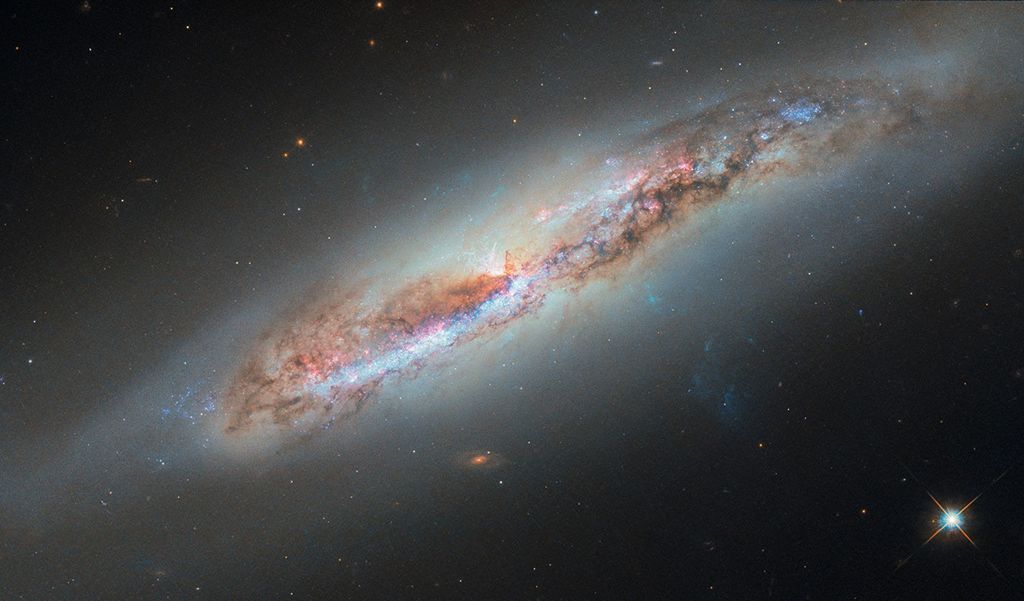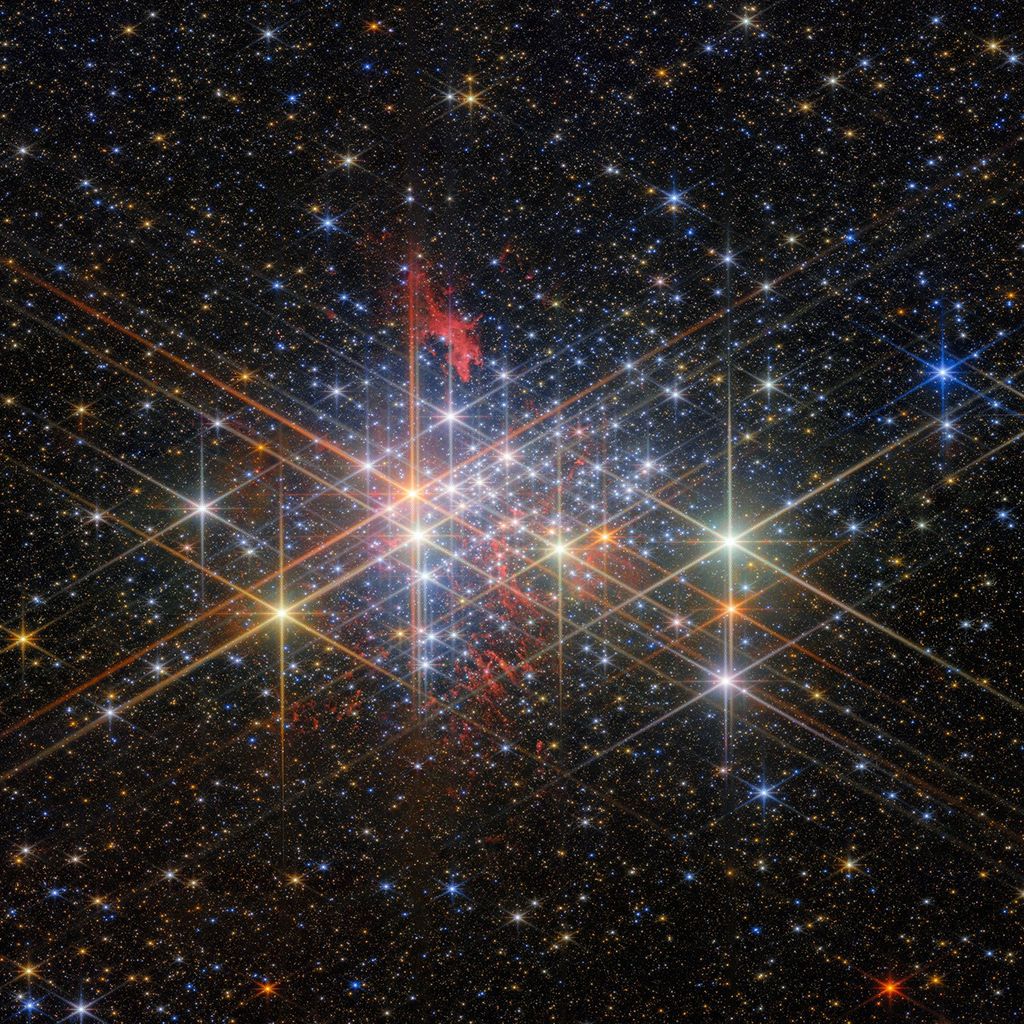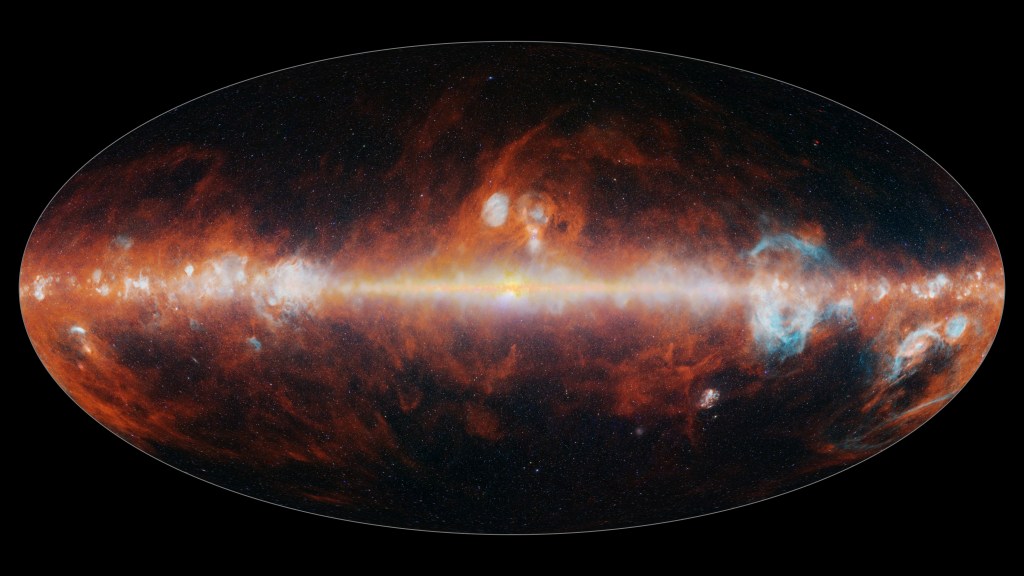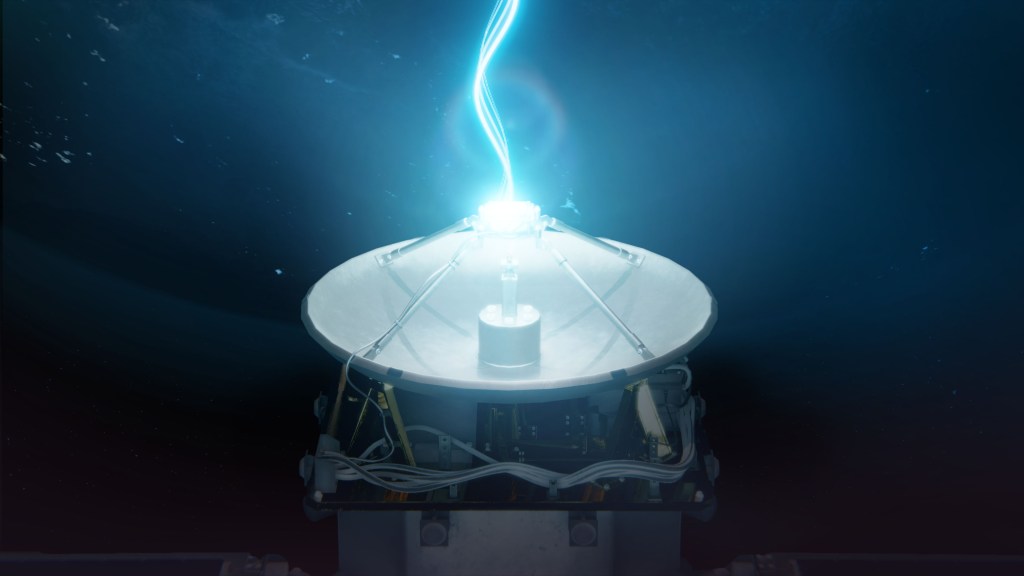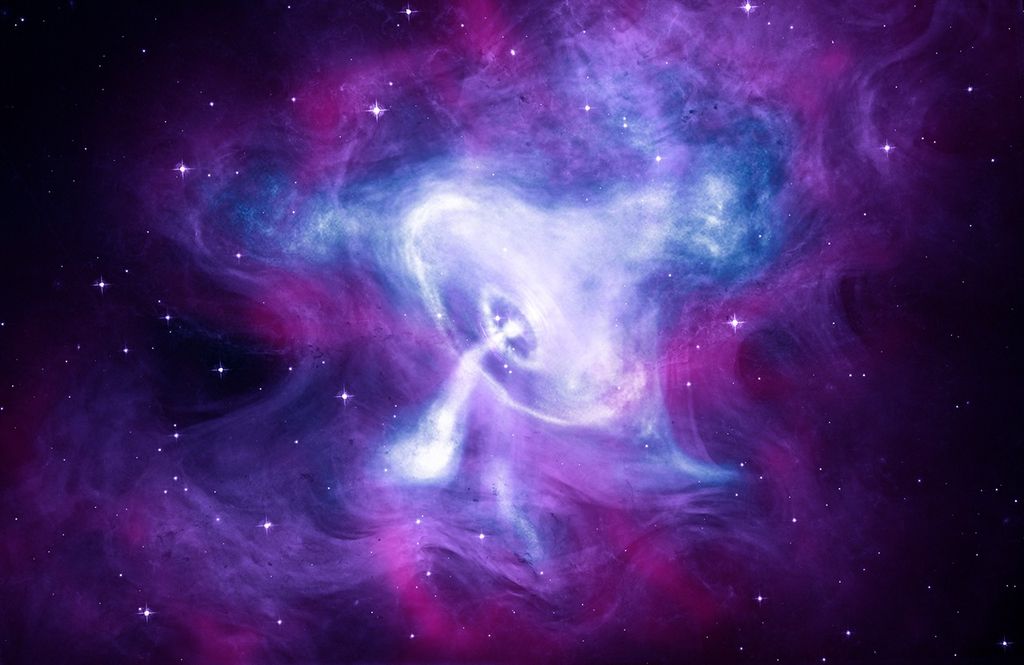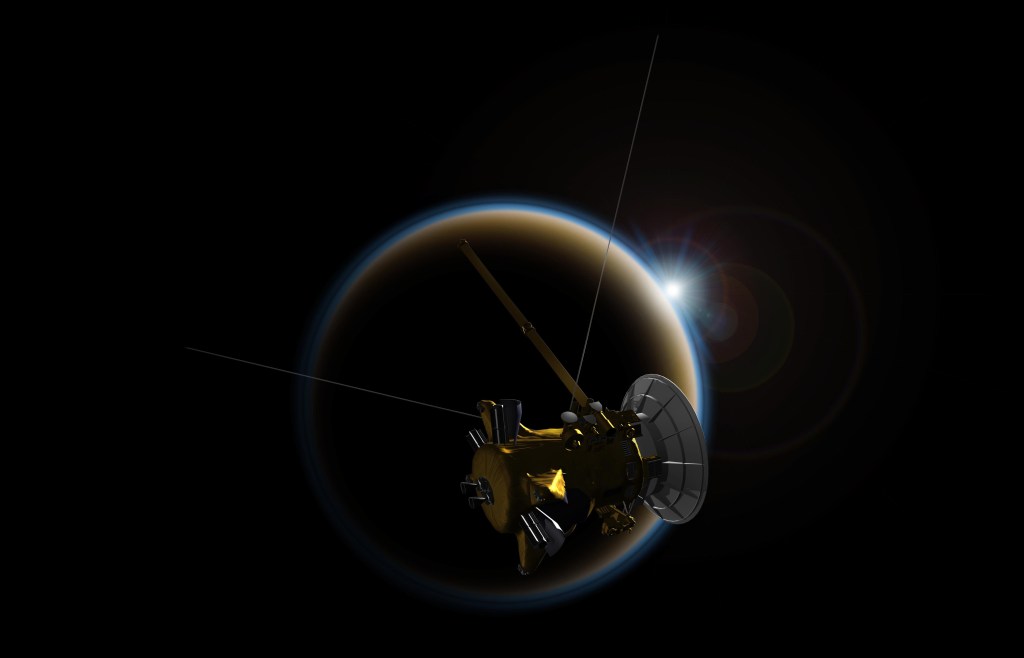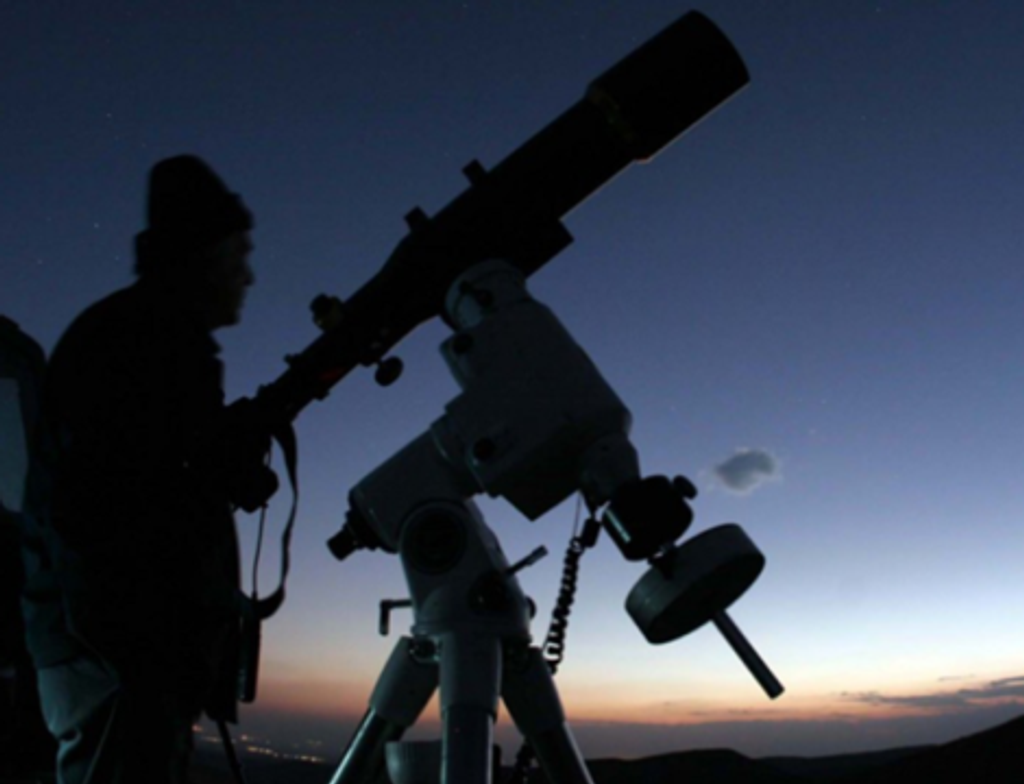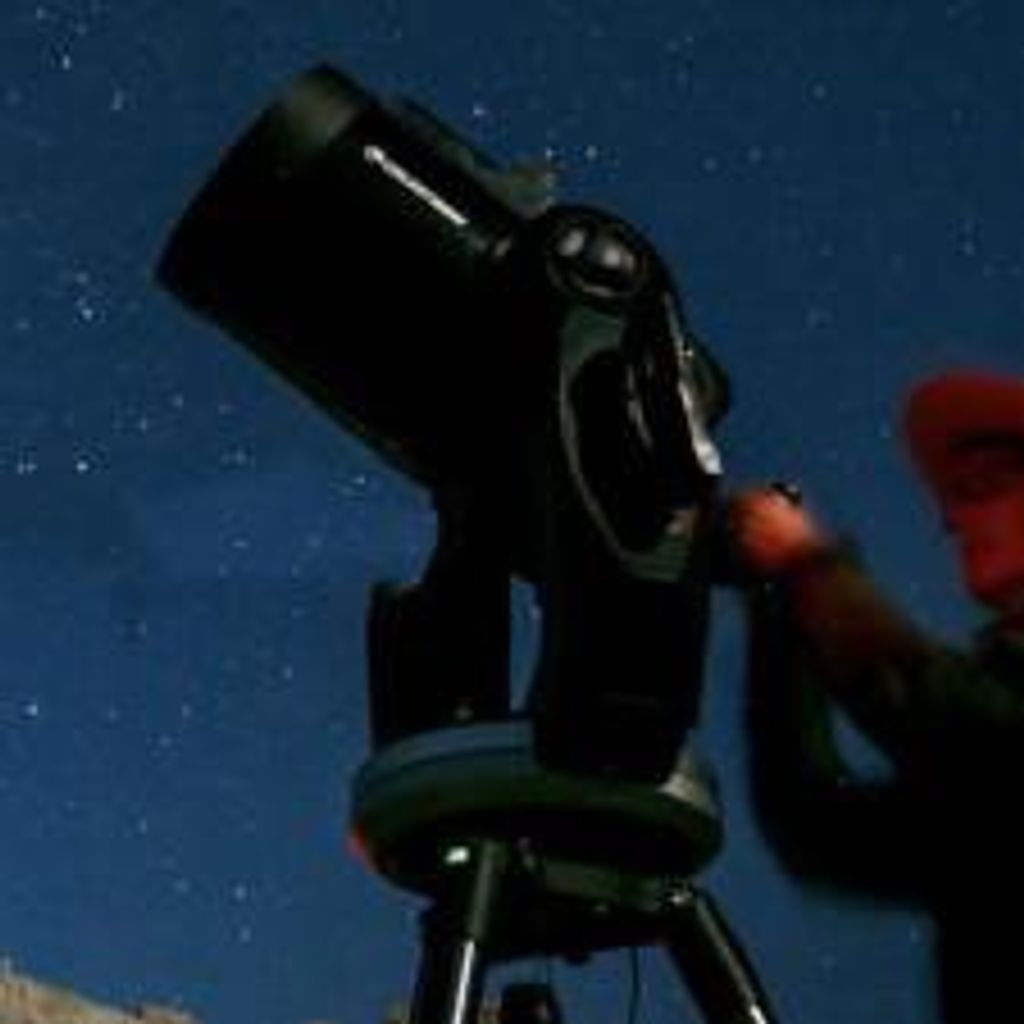1 min read
Saturn Aurora – January 26, 2004

About the Object
- DistanceDistanceThe physical distance from Earth to the astronomical object. Distances within our solar system are usually measured in Astronomical Units (AU). Distances between stars are usually measured in light-years. Interstellar distances can also be measured in parsecs.The semi-major axis of Saturn's orbit about the sun is 9.5 Astronomical Units (A.U.) or roughly 1.4 billion km.
- DimensionsDimensionsThe physical size of the object or the apparent angle it subtends on the sky.The planet (without rings) has a diameter of roughly 75,000 miles (120,000 km) at the equator.
About the Data
- Data DescriptionData DescriptionProposal: A description of the observations, their scientific justification, and the links to the data available in the science archive.
Science Team: The astronomers who planned the observations and analyzed the data. "PI" refers to the Principal Investigator.The Hubble image was created from HST ACS data from proposal 9354: E. Karkoschka and M. Tomasko (Univ. of Arizona) and STIS data from proposal 10083: J.T. Clarke (Boston Univ.) and collaborators. The science team includes: J.T. Clarke (Boston Univ.), J.-C. Gerard and D. Grodent (Univ. de Liege), S. Wannawichian (Boston Univ.), J. Gustin (Univ. de Liege), J. Connerney (NASA Goddard Space Flight Center), F. Crary (Southwest Research Institute), M. Dougherty (Imperial College, London), W. Kurth (Univ. of Iowa), S.W.H. Cowley and E.J. Bunce (Univ. of Leicester), T. Hill (Rice Univ.) and J. Kim (Yonsei Univ., Seoul, Korea) - InstrumentInstrumentThe science instrument used to produce the data.HST>ACS/HRC and HST>STIS
- Exposure DatesExposure DatesThe date(s) that the telescope made its observations and the total exposure time.ACS/HRC: March 22, 2004; STIS: January 26, 2004
- FiltersFiltersThe camera filters that were used in the science observations.ACS/HRC: F439W (B), F502N ([O III]), F550W (V), F658N (H-alpha) STIS: 25MAMA (Near-UV) and F25SRF2 (Far-UV)
- Object NameObject NameA name or catalog number that astronomers use to identify an astronomical object.Saturn
- Object DescriptionObject DescriptionThe type of astronomical object.Planet with Aurora
- Release DateFebruary 16, 2005
- Science ReleaseSaturn’s Auroras Defy Scientists’ Expectations
- Credit
Related Images & Videos
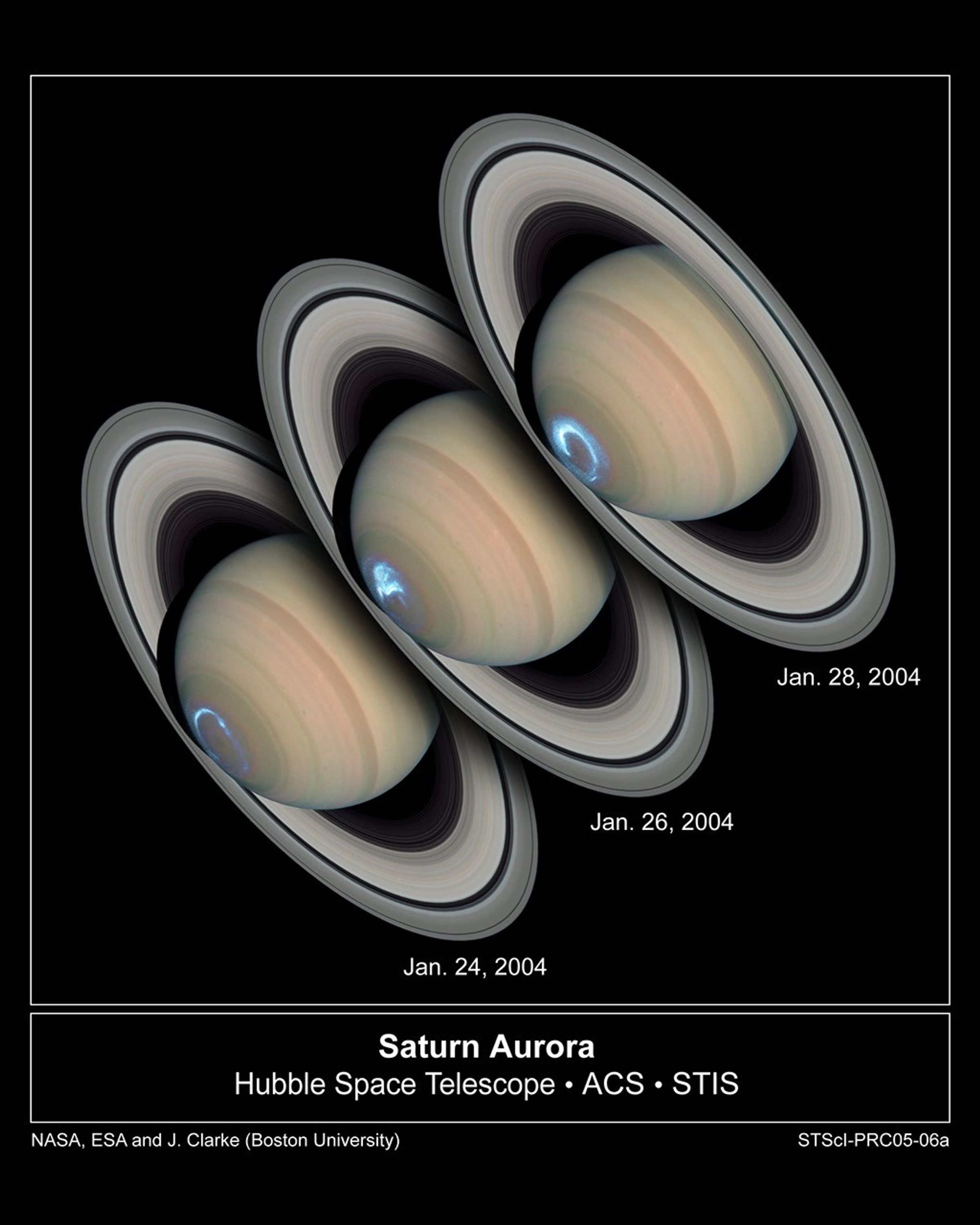
Saturn's Dynamic Auroras
These images reveal the dynamic nature of Saturn's auroras. Viewing the planet's southern polar region for several days, NASA's Hubble Space Telescope snapped a series of photographs of the aurora dancing in the sky. The snapshots show that Saturn's auroras differ in character...

Close-Up Look at Saturn's Aurora
This is an artist's concept of an opulent aerial display of a cherry-red aurora hovering over Saturn's south pole. Auroras are triggered by high-speed particles from the Sun, which electrify the planet's upper atmosphere. The aurora is red because of emission from glowing...
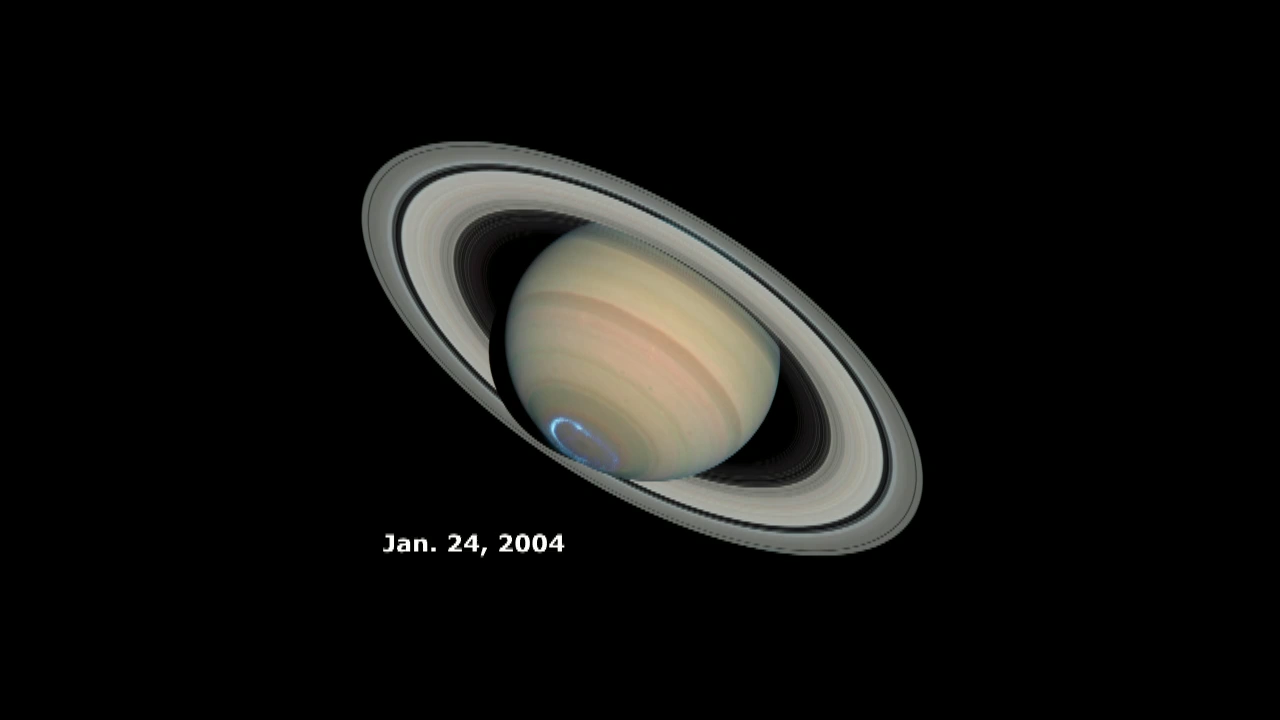
Saturn's Aurora: Ring of Light (Annotated)
NASA's Hubble Space Telescope Imaging Spectrograph took a series of snapshots of Saturn's aurora dancing in the sky. The ultraviolet images were taken on Jan. 24, 26, 28 and 30, 2004. This dissolve sequence shows the aurora appearing as a ring of light circling the planet's...
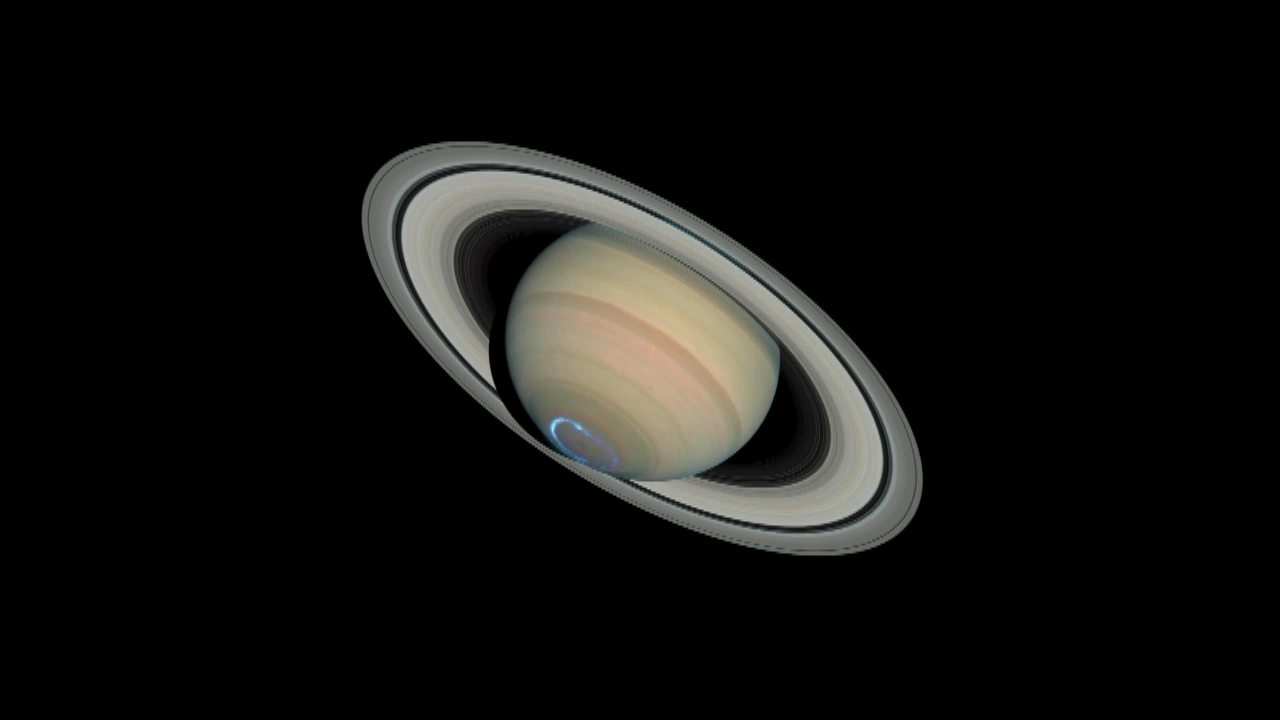
Saturn's Aurora: Ring of Light
NASA's Hubble Space Telescope Imaging Spectrograph took a series of snapshots of Saturn's aurora dancing in the sky. The ultraviolet images were taken on Jan. 24, 26, 28 and 30, 2004. This dissolve sequence shows the aurora appearing as a ring of light circling the planet's...
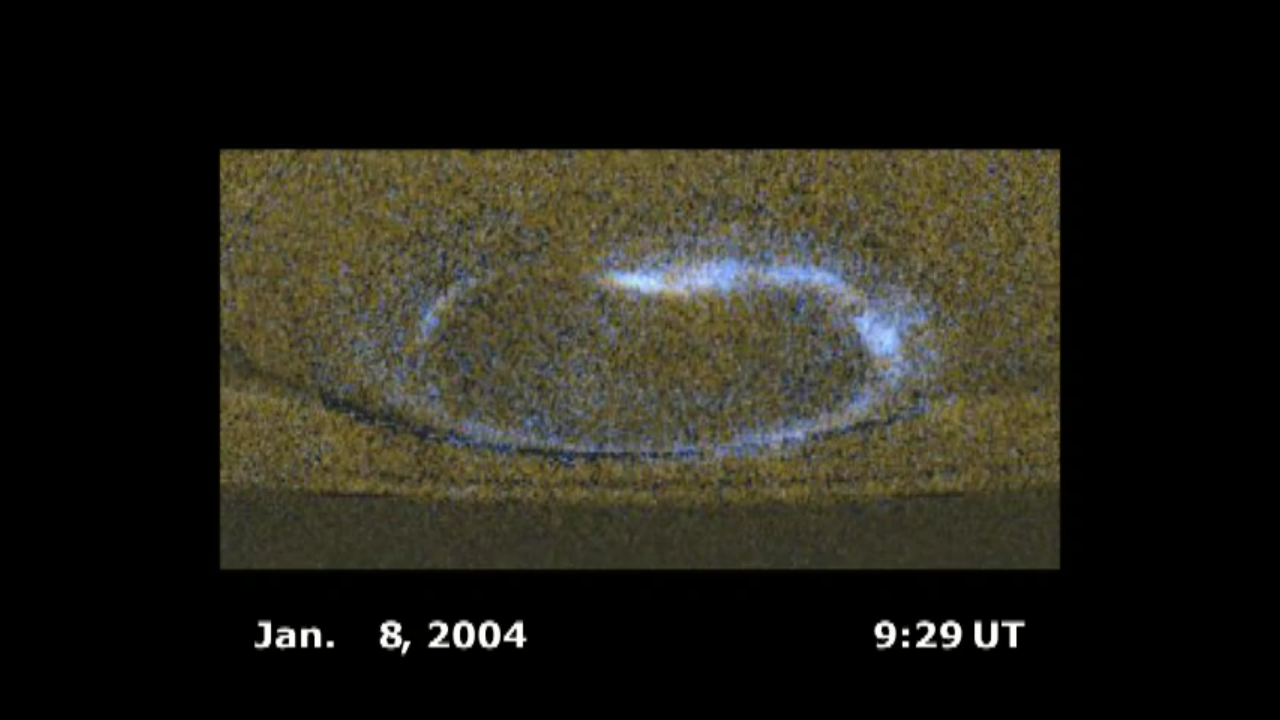
Saturn's Aurora: Changes During Jan. 8-30, 2004 (Annotated)
NASA's Hubble Space Telescope Imaging Spectrograph took a series of snapshots of Saturn's aurora dancing in the sky. The ultraviolet images were taken on Jan. 8, 10, 12, 14, 16, 18, 20, 21, 23, 24, 26, 28 and 30, 2004. This dissolve squence shows the aurora appearing as a ring...
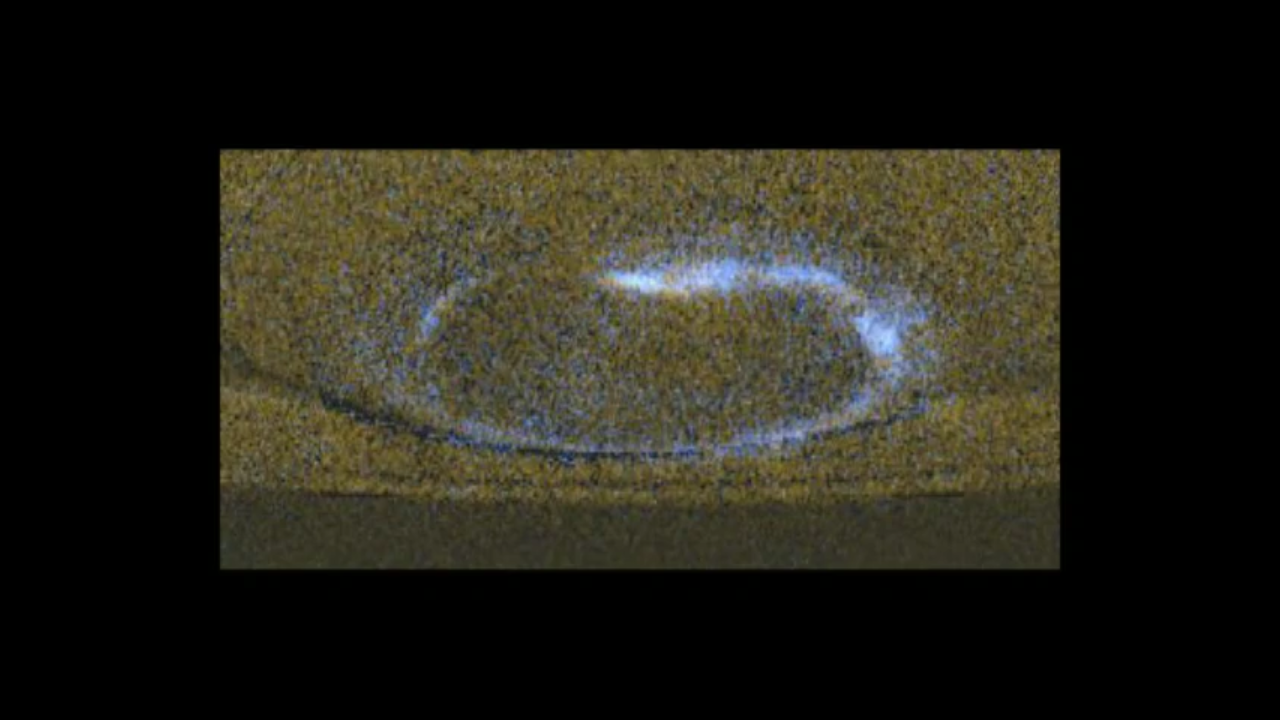
Saturn's Aurora: Changes During Jan. 8-30, 2004
NASA's Hubble Space Telescope Imaging Spectrograph took a series of snapshots of Saturn's aurora dancing in the sky. The ultraviolet images were taken on Jan. 8, 10, 12, 14, 16, 18, 20, 21, 23, 24, 26, 28 and 30, 2004. This dissolve squence shows the aurora appearing as a ring...
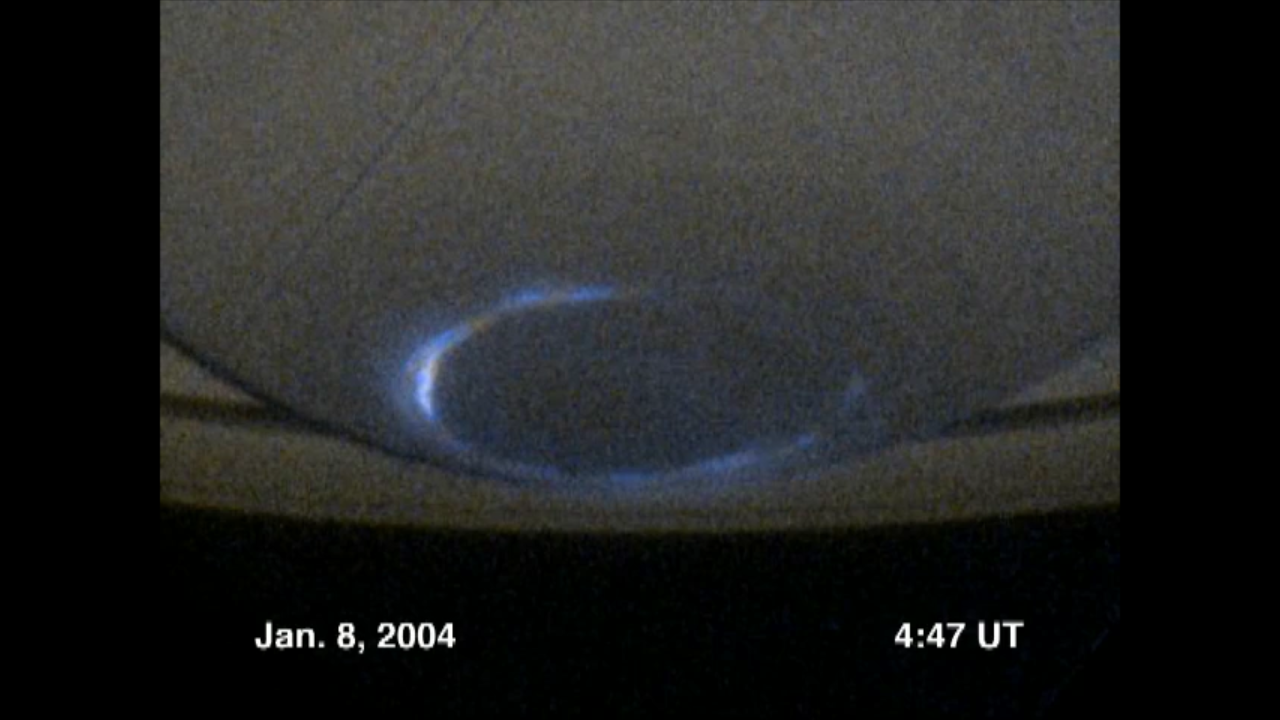
Saturn's Aurora: Changes During Jan 8, 2004 (Annotated)
NASA's Hubble Space Telescope Imaging Spectrograph took a series of snapshots of Saturn's aurora dancing in the sky. The ultraviolet images were taken on Jan. 8, 2004. This dissolve sequence shows the aurora appearing as a ring of light circling the planet's polar ring....
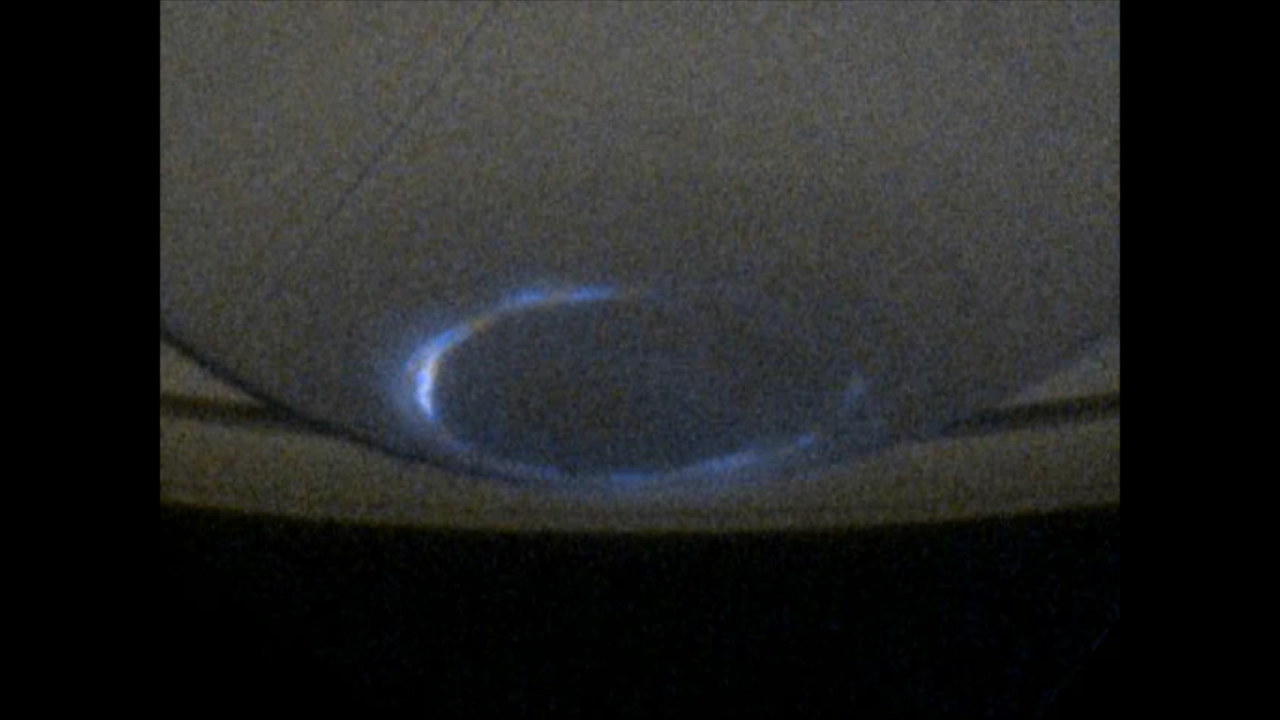
Saturn's Aurora: Changes During Jan 8, 2004
NASA's Hubble Space Telescope Imaging Spectrograph took a series of snapshots of Saturn's aurora dancing in the sky. The ultraviolet images were taken on Jan. 8, 2004. This dissolve sequence shows the aurora appearing as a ring of light circling the planet's polar ring....
Share
Details
Claire Andreoli
NASA’s Goddard Space Flight Center
Greenbelt, Maryland
claire.andreoli@nasa.gov

